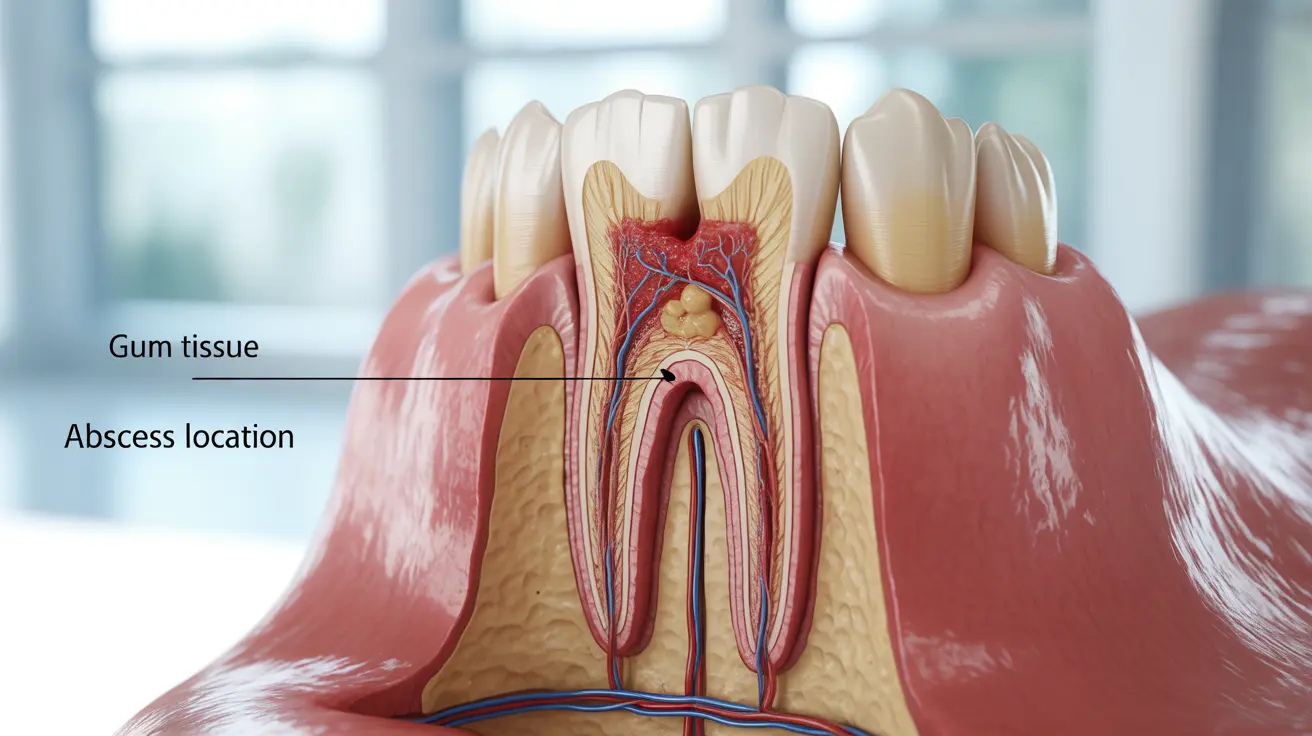A gum abscess is a serious dental condition that requires prompt attention. This painful infection occurs when bacteria create a pocket of pus in the gum tissue, potentially threatening not just your oral health but your overall well-being. Understanding the signs, treatments, and prevention methods is crucial for maintaining good dental health and avoiding complications.
Whether you're currently experiencing symptoms or want to prevent future issues, this comprehensive guide will help you understand everything you need to know about gum abscesses, from recognition to treatment options.
Recognizing Gum Abscess Symptoms
Identifying a gum abscess early is crucial for successful treatment. Common signs include:
- Severe, throbbing pain in the affected area
- Swollen, red gums that may feel tender
- A visible bump or pimple-like structure on the gum
- Bad breath or unusual taste in the mouth
- Sensitivity to hot and cold temperatures
- Pain while chewing or biting
If you notice any of these symptoms, seeking immediate dental care is essential to prevent the infection from spreading and causing more serious complications.
Causes and Risk Factors
Understanding what leads to gum abscesses can help prevent their occurrence. Several factors contribute to their development:
- Poor oral hygiene practices
- Untreated gum disease
- Trauma to the gum tissue
- Weakened immune system
- Previous dental work complications
- Deep gum pockets
Professional Treatment Options
Professional dental treatment is necessary to properly address a gum abscess. Common treatment approaches include:
Immediate Interventions
- Draining the abscess
- Thoroughly cleaning the affected area
- Prescribing antibiotics when necessary
Long-term Solutions
- Root canal therapy if the infection has reached the tooth
- Deep cleaning and scaling
- Addressing underlying gum disease
- Surgical intervention in severe cases
Prevention Strategies
Preventing gum abscesses involves maintaining excellent oral hygiene and regular dental care:
- Brush teeth twice daily with fluoride toothpaste
- Floss daily to remove food particles and plaque
- Use an antiseptic mouthwash
- Schedule regular dental check-ups
- Address dental issues promptly
- Maintain a healthy diet low in sugary foods
Temporary Relief Measures
While waiting for professional treatment, several home care methods can provide temporary relief:
- Warm salt water rinses
- Over-the-counter pain relievers
- Avoiding extremely hot or cold foods
- Maintaining gentle oral hygiene practices
- Using cold compresses on the outside of the cheek
Frequently Asked Questions
What are the typical symptoms of a gum abscess, and how can I differentiate it from other oral infections? A gum abscess typically presents as a painful, swollen area with a visible bump on the gum. Unlike general gum inflammation, an abscess is usually more localized and may contain visible pus. The pain is typically more intense and throbbing compared to other oral infections.
How do dentists treat a gum abscess, and what are the most common procedures involved? Dentists typically begin by draining the abscess and cleaning the area thoroughly. They may prescribe antibiotics to fight the infection. Depending on the severity, treatment might include root canal therapy, deep cleaning, or surgical intervention to address the underlying cause.
Can a gum abscess be prevented through good oral hygiene practices, and what specific habits reduce the risk? Yes, regular brushing, flossing, and professional dental cleanings significantly reduce the risk of gum abscesses. Maintaining a healthy diet, avoiding tobacco, and addressing dental issues promptly also help prevent their formation.
What are the potential complications or risks if a gum abscess is left untreated, and how serious can they become? Untreated gum abscesses can lead to severe complications, including spread of infection to other parts of the body, bone loss, tooth loss, and in rare cases, life-threatening conditions if the infection enters the bloodstream.
Are there any effective home remedies for relieving gum abscess symptoms while waiting for professional treatment? While not a substitute for professional care, temporary relief can be found through warm salt water rinses, over-the-counter pain medication, and cold compresses. However, these measures should only be used while awaiting professional treatment.




